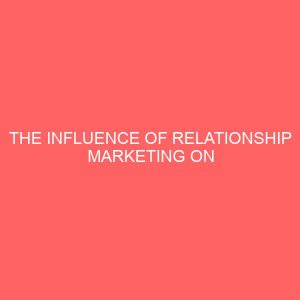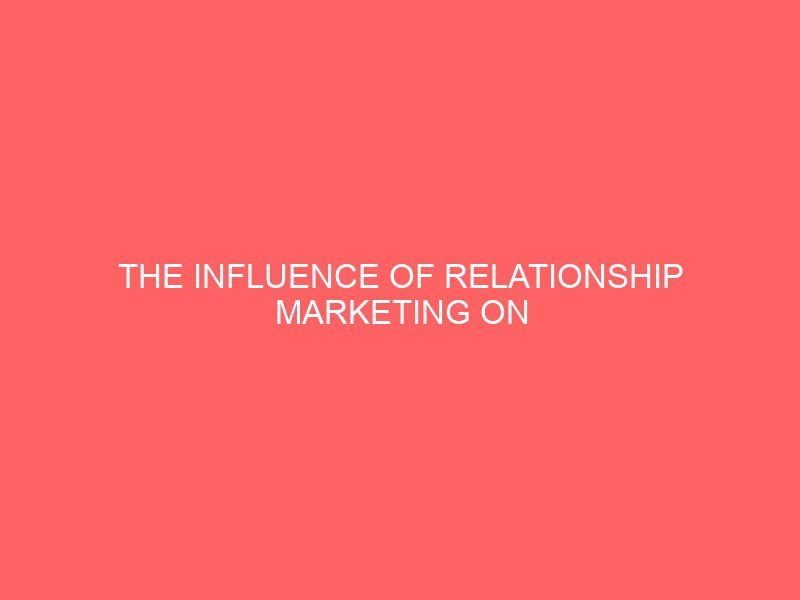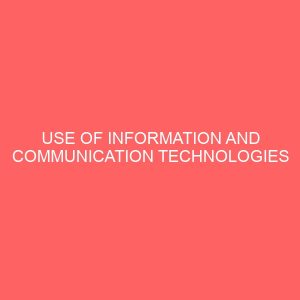Description
CHAPTER ONE
INTRODUCTION
1.1 Background of the Study
Relationship marketing (RM) aims at establishing, maintaining and enhancing relationships between the organization and the customers at a profit so that the organizations objectives are met. When the relationship is established between the customers and the company, brand loyalty is created from the customers repeat purchase and this translates to more profits for the company (Victor 1990:36). Relationship marketing is a concept that has gained popularity over the recent years. Companies and banks are beginning to understand the value of creating a relationship with the customers. Consequently, they are now striving to develop meaningful relationship more proactively. This concept was originally introduced by Leonard Berry in 1983 when he emphasized that relationship marketing was based on the concept of developing a long term relationship with a customer for the purpose of patronage bearing in mind that other competitors are always available (Yan and Wu, 2007). According to Doyle & Stern (2006:3), relationship marketing is a long term continuous series of transactions between parties which occurs when each trusts other to deal fairly, reliably and helpfully. Relationship marketing has therefore emerged as ?a popular new paradigm due to shift in focus from customer acquisition to customer retention. It is likely to shift once again and will transform into customer relationship management (CRM) with a hybrid of marketing relationship programs that range from relation to out sourcing market exchange and customer interactions (Sheth & Kellstall,2002:30). It therefore suggests that when a good working relationship is built, negotiating time and costs are reduced and the patterns of transactions become more predictable and secure. Due to increased competition, todays banks are beginning to understand and employ the techniques of relationship marketing. To retain these customers, banks are now striving to develop meaningful relationships with key customers and moreso to manage those customer relationships more proactively (Connor, Galvin, Evans , 2004:16). Relationship marketing therefore attempts to create a more holistic, personalized brand experience (service) to create stronger customer ties. According to Kottler and Armstrong, (2009:14) a number of companies are today offering services and relevant facts to individual customers based on information about past transaction, demographics, psychographics, media and distribution preferences. By focusing on their most profitable customers, products and channels, there is a firm hope to achieve profitable growth capturing a larger share of each customers expenditure by building high customer loyalty. Relationship marketing is aimed at retaining existing customers since attracting new customers may cost up to five times more than retaining an existing customer. If Union Bank PLC and other commercial banks in Makurdi, Anambra State aim at increasing the size of their customers, the banks must train their employees in cross selling and up selling their products. There is need to realize the benefits from lowered costs and increased profitability from long term relationships between firms and their customers. On the other hand, customers will enjoy the transactions of an organization that understands them and their requirements and they will also have a reliable financial service provider. Simply put, therefore, relationship marketing involves all activities and efforts of the business organization aimed at creating and sustaining healthy relationship with the customers. This is necessitated by the fact that the customer is central to organizational activities. There is credence by the increasing rate of competition in the business circles especially in the banking sector. It is on this note therefore that Victor (1970:11) acknowledged that; ?the key to successful marketing is having the right product at the right price in the right place with the right promotion?. In the end, the person who decides the rightness of these four elements is the customer. The customer is therefore central to the 4Ps of marketing which are: Price, Place, Promotion and Product. It is the customer that determines the relevance of the 4Ps through patronage. Patronage therefore, is arguably the target of the 4Ps of marketing. However, relationship marketing seems to go a little beyond patronage and aims at securing the loyalty of the customer. The company, in this instance, should not limit the definitions of the business organization to the confines of profit making but should see it as a responsible citizen whose interest is to provide customers? well being. It is on this note therefore, that business or







